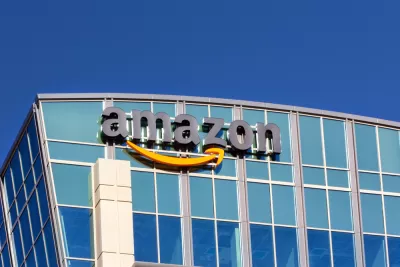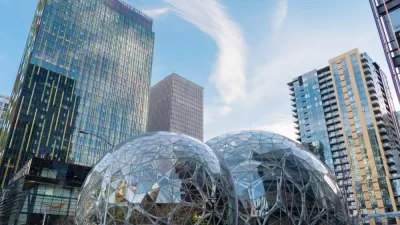In September, 238 applicants dreamed the impossible dream of attracting the second headquarters of Amazon, along with some 40,000 jobs. Today, all but 20 of those applicants will have to find a new quest.

"Amazon said on Thursday that it had whittled the list of possible homes for its second headquarters to 20, including centers of technology like Boston and some surprise locations like Columbus, Ohio," reports Nick Wingfield.
The list reads as follows:
- Atlanta
- Austin, Tex.
- Boston
- Chicago
- Columbus, Ohi
- Dallas
- Denver
- Indianapolis
- Los Angeles
- Miami
- Montgomery County, Md.
- Nashville
- Newark
- New York
- Northern Virginia
- Philadelphia
- Pittsburgh
- Raleigh, N.C.
- Toronto
- Washington, D.C.
As noted by Wingfield, the finalists tend toward the Midwest, South, and the East Coast—pretty much everywhere but the West Coast and the Silicon Valley. Los Angeles was the only West Coast city to make the final 20. The Washington, D.C. region pulled three finalists alone.
Planetizen provided a comprehensive roundup of media coverage of #HQ2 deadline day, which sparked a wave of interest unparalleled in recent years and raised continuing questions about Amazon's method for selecting a new home. Martin Austermuhle just this week managed to find out some of the details of Washington, D.C.'s bid for Amazon's second headquarters through a Freedom of Information Act request. Still, reports Austmeruhle, many of the incentives D.C. has offered for HQ2, including the actual dollar value to Amazon, "remain a mystery, known only to senior city officials and executives with the Seattle-based company."
FULL STORY: Amazon Chooses 20 Finalists for Second Headquarters

Study: Maui’s Plan to Convert Vacation Rentals to Long-Term Housing Could Cause Nearly $1 Billion Economic Loss
The plan would reduce visitor accommodation by 25,% resulting in 1,900 jobs lost.

North Texas Transit Leaders Tout Benefits of TOD for Growing Region
At a summit focused on transit-oriented development, policymakers discussed how North Texas’ expanded light rail system can serve as a tool for economic growth.

Why Should We Subsidize Public Transportation?
Many public transit agencies face financial stress due to rising costs, declining fare revenue, and declining subsidies. Transit advocates must provide a strong business case for increasing public transit funding.

How to Make US Trains Faster
Changes to boarding platforms and a switch to electric trains could improve U.S. passenger rail service without the added cost of high-speed rail.

Columbia’s Revitalized ‘Loop’ Is a Hub for Local Entrepreneurs
A focus on small businesses is helping a commercial corridor in Columbia, Missouri thrive.

Invasive Insect Threatens Minnesota’s Ash Forests
The Emerald Ash Borer is a rapidly spreading invasive pest threatening Minnesota’s ash trees, and homeowners are encouraged to plant diverse replacement species, avoid moving ash firewood, and monitor for signs of infestation.
Urban Design for Planners 1: Software Tools
This six-course series explores essential urban design concepts using open source software and equips planners with the tools they need to participate fully in the urban design process.
Planning for Universal Design
Learn the tools for implementing Universal Design in planning regulations.
Ascent Environmental
Borough of Carlisle
Institute for Housing and Urban Development Studies (IHS)
City of Grandview
Harvard GSD Executive Education
Toledo-Lucas County Plan Commissions
Salt Lake City
NYU Wagner Graduate School of Public Service




























